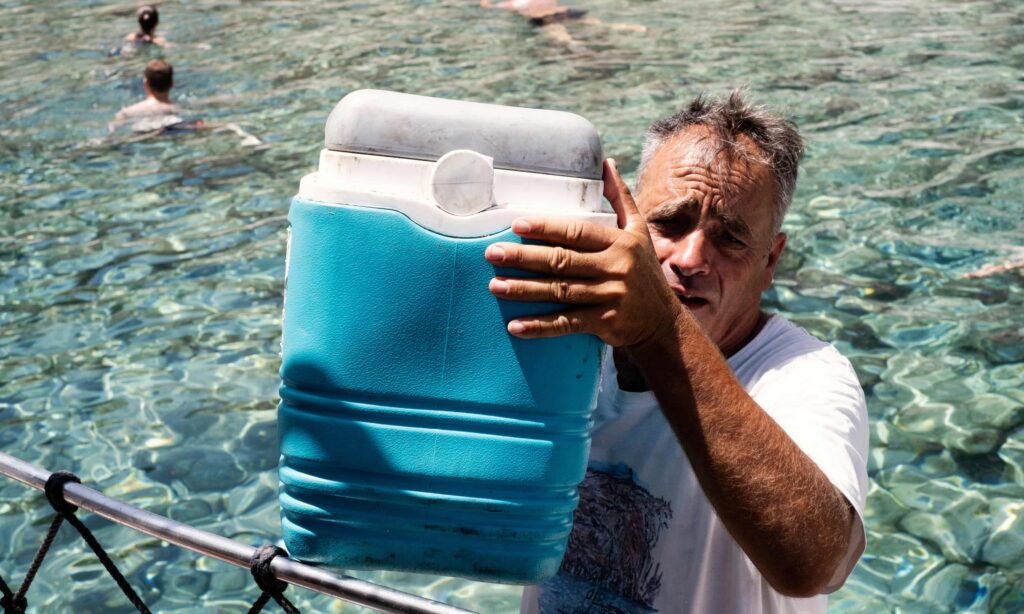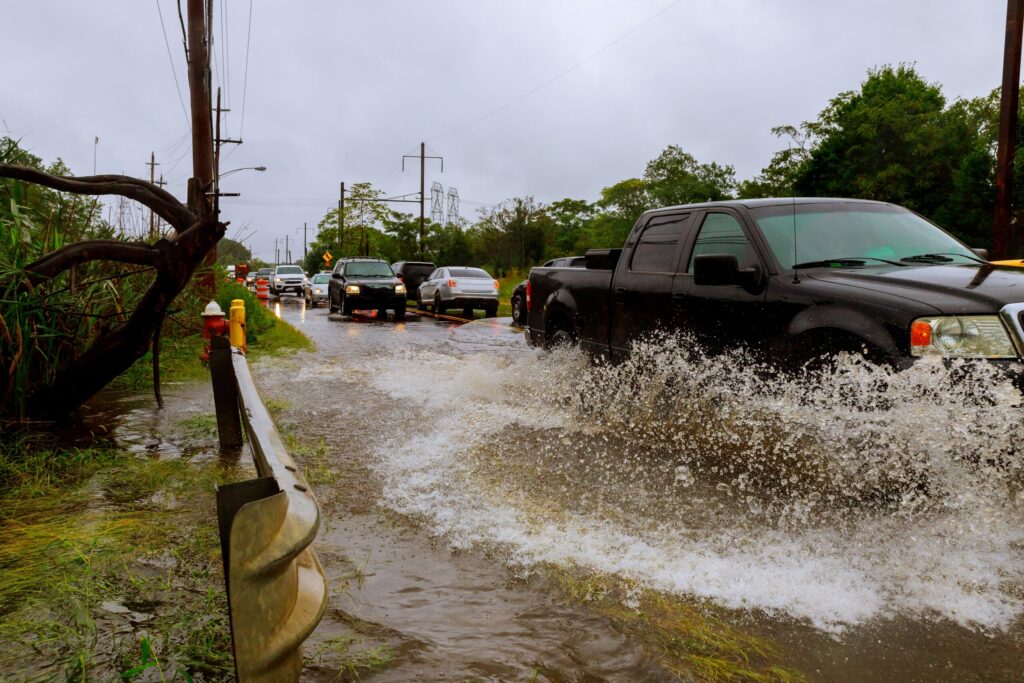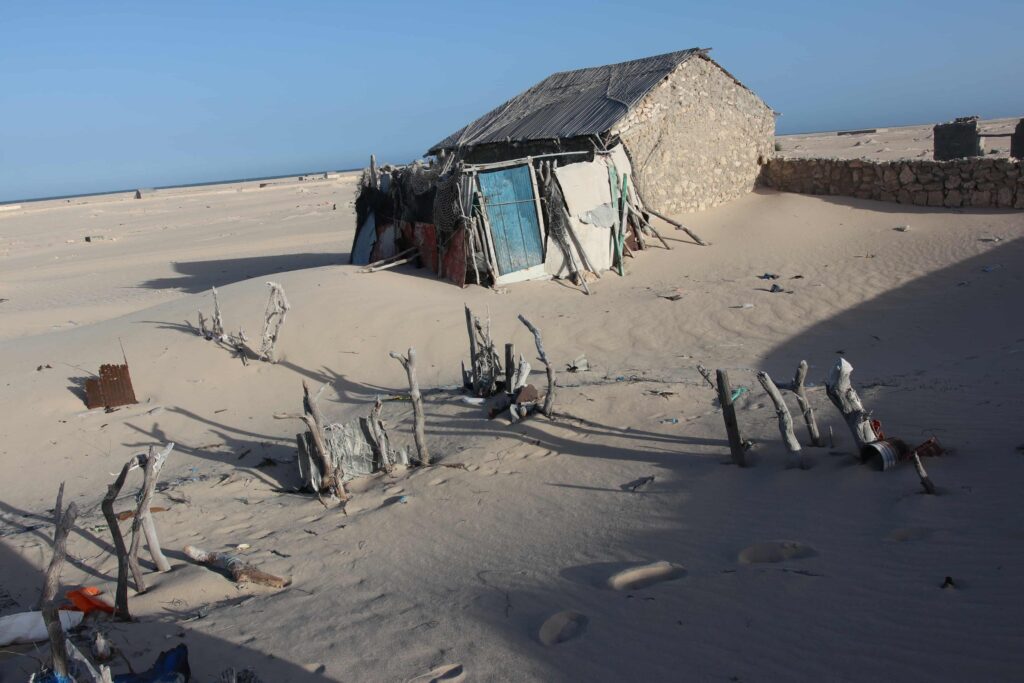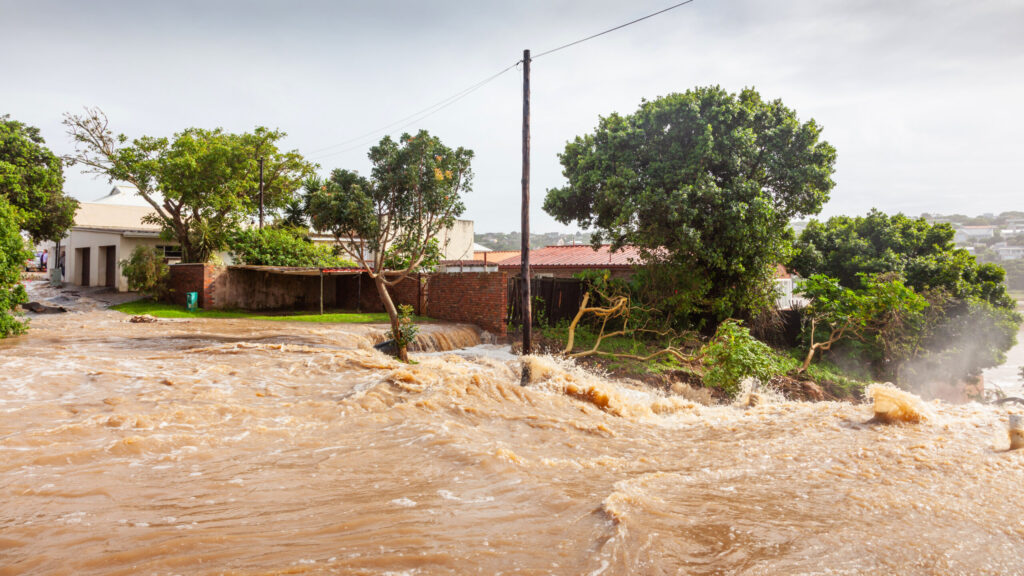- The Earth’s changing climate, driven by human activities, will bring more floods and heatwaves more often — and it’s bad news for our physical and mental health.
- Hot, polluted air will make it even harder for people who already are short of breath. Infectious diseases will spread faster and further. Longer droughts, extreme heatwaves and worsening storms will make it harder for people to grow food, so more people will go hungry.
- In this first article in a Bhekisisa series on the link between climate change and health, we break down what the issues are.
Hot, dirty air, floods and having to suddenly change the way in which you grow your crops are bad for your health — and over the next few years, all of these climate change-related effects will get worse.
Climate change is nothing new. In fact, weather patterns have often changed over the past 2-million years because of the Earth’s hot and cold cycles.
But what is new is that human activities are pushing up the Earth’s temperature gauge. This means we’re meddling with a previously stable climate system — and on which human existence has relied for thousands of years.
Fossil records show that in the past, it took about 5 000 years for the Earth’s temperature to rise by about 5°C.
But from around the mid-19th century, when coal-fired industrialisation started to change the world, we’ve seen an increase of about 1°C, which is roughly 10 times faster than before — and climate scientists say it’s not about to stop anytime soon.
In the first of a Bhekisisa series on climate change and health, we help you make the link between why changing long-term weather patterns is bad news for your health.
Climate change explained
Our industries, cars and farms put lots of greenhouse gases such as carbon dioxide and methane into the air. Greenhouse gases trap heat in the Earth’s atmosphere, and much like the glass roof of a greenhouse, let the sun’s heat in during the day and keeps it inside the cosy cover at night.

The natural greenhouse effect is essential for life on Earth — but human activities are upsetting the balance, and so the air is getting warmer than it should be.
Warm air makes water evaporate from the surface of the planet, but as things heat up, even more water vapour — one of the biggest heat-trapping gases — goes into the air, feeding the cycle.
The Earth’s rising air temperature — called global warming — drives the change in long-term weather patterns, aka climate change.
Models show that as the Earth gets hotter, heatwaves and wildfires (which are fuelled by parched forests, excessive heat and dry air) are set to become more common, warm seasons will last longer and places will get drier. In some areas rainfall will become less and places will experience long droughts. The air will likely also get dirtier and smoggier.
But at the same time, because of the warmer air, evaporation is becoming more intense and so bigger, stormier clouds form. They unleash galeforce winds and torrents of rain — often fast and furiously — leading to extreme events such as cyclones and floods.
The warmer the air, the faster snow, glaciers and ice sheets start to melt. This puts more liquid water into the Earth’s system, boosting the reservoir from which water can evaporate. Sea levels will rise and coastal areas are predicted to flood more and more often.
People will be displaced from their homes. It will be difficult to grow crops. The areas where plants, animals and microorganisms live and how far they spread — including insects, parasites and disease-causing bacteria and viruses — will change. People will get more and more stressed about life.
It’s bad news all round — and for people in poorer countries, where health systems are already overburdened, it will likely be worse.
How hot air makes it hard to breathe
Some of the gases making the Earth hotter are also polluting the air. Air pollution killed around 6.7-million people globally in 2019, and led to conditions such as lasting airway infections, asthma and pneumonia. In the same year, about 70 out of every 100 000 people in South Africa died from breathing in bad air.
Air pollution affects everyone on Earth, and if the amount of harmful gases being released into the air is not reduced, lung diseases will become more common.
For people who already have a lung condition (say, asthma or chronic obstructive pulmonary disease — in which the airways narrow and so make someone short of breath), air pollution is worrying. But add hotter days into the mix and it gets worse.
[WATCH] How to keep people on HIV treatment during a flood
Research shows that heat causes inflammation of the moist lining of the small airways, which make them narrow easily. Because the lining then also dries out, getting the oxygen from inhaled air into the blood becomes harder too. Altogether, heat makes it more and more difficult for someone with lung disease to breathe.
Researchers have seen this locally too. A 2019 study by scientists from the University of Pretoria found that in Secunda, a town in Mpumalanga, more people are admitted to hospital because of lung diseases on hot days.
Secunda is located in the government’s priority area for gauging air quality on the Highveld, because processes from large industries where fossil fuels such as coal and oil are burned, such as at the chemical manufacturer Sasol and Eskom’s power stations, billow pollutants into the air.
One of these is sulphur dioxide, which is released along with the greenhouse gases carbon dioxide and nitrogen dioxide when coal is burnt. But burning coal also releases tiny bits of solid materials, called particulate matter.
When sulphur dioxide and these particles combine, sulphate aerosols form — which make it hard to breathe, and even more so on hot days.
Because of climate change, the temperature in the area is expected to increase by four degrees or more by the end of the century. Dirty air plus hotter days could be disastrous.
How hot air messes with your head
Climate change makes people worry about their lives and livelihoods — so much that the World Health Organisation (WHO) said in 2022 that the effects of climate change on mental health should be included in countries’ health plans.
In a 2021 study published in Lancet Planetary Health, researchers asked 10 000 under-25s from rich and poorer countries, in the northern hemisphere and south, how they felt about climate change, and especially how they perceived their government’s approach to the issue.
More than half of these youths experienced negative emotions thinking about climate change, such as anxiety, sadness, guilt and feeling powerless — and said that these feelings adversely impact their lives. Three out of four young people are frightened about the future.
Yet climate anxiety is not the only mental health issue related to the changing state of the planet.
Scientists warn that survivors of natural disasters such as floods or heatwaves can develop mental illnesses.
For instance, some people who survived Hurricane Katrina in 2005 later experienced post-traumatic stress disorder — a mental health disorder caused by a terrifying event — because friends and loved ones died in the storm, they lost their belongings and houses, or they had to move far away.
Moreover, people who lose their income or become injured because of natural disasters are more likely to develop major depression (a condition where someone consistently has a low mood, feels worthless and lethargic), studies show.
Why climate change can give you a fever
As weather patterns change, how far and fast germs spread will change too — whether it’s because the hosts on which they hitch a ride venture into new territories or whether conditions make it easier for them to multiply.
Illnesses transmitted by insect hosts, such as malaria or dengue fever, will likely spread into areas where they weren’t previously common. For example, an analysis published in the journal Biology Letters in February showed that the mosquitoes that carry the parasite that causes malaria have, since the start of the 1900s, steadily crept northwards (by about 5km per year) from their original tropical African climes. They’ve also slowly moved into higher-lying areas (where it was previously too cold for mosquitoes to survive), climbing about 6.5m a year. This means that malaria could become widespread in the highlands of East Africa — where it previously was uncommon.
The trouble, though, is that because such diseases are unexpected in the new areas, people are unprepared for treating or preventing them, which means more people may fall ill or die.
Climate change can also make waterborne diseases such as cholera spread fast. Cholera is caused by a type of bacterium, Vibrio cholerae, that lives in people’s and animals’ guts. When faeces run into water sources, such as when sanitation systems are washed away because of an extreme weather event like a storm or flood, infections can spread rapidly. The illness causes runny stools and can be fatal if people don’t get treated soon.
For example, cholera has been common in Malawi since 1998 and people here usually catch the disease in the rainy season (from November to April). However, early last year, the country was pummelled by two tropical storms shortly after each other, and disease cases continued far beyond the areas affected by floods and long into the dry season.
It led to the country’s worst cholera outbreak so far, with close to 59 000 people falling ill and more than 1 700 deaths recorded since March 2022.
Why a hotter Earth means more people will go hungry
Changing weather patterns and extreme weather events like droughts or severe storms not only destroy crops but also mean that farmers have to change their planting patterns. Higher temperatures and less water could lead to smaller yields or mean that some areas are not suitable to growing a certain type of food any longer. Moreover, pests and diseases may spread into different areas and destroy a famer’s harvest.
Globally, already more than 9% of people (about 735-million people) went hungry in 2022. In Africa, on average, about 16-million people often go hungry because of climate extremes.
The 2022 Intergovernmental Panel on Climate Change report says that if global temperatures rise by 1.5–2°C, droughts, heatwaves and floods will last longer and become worse. This will make hunger worse in poorer countries, especially in Africa.















